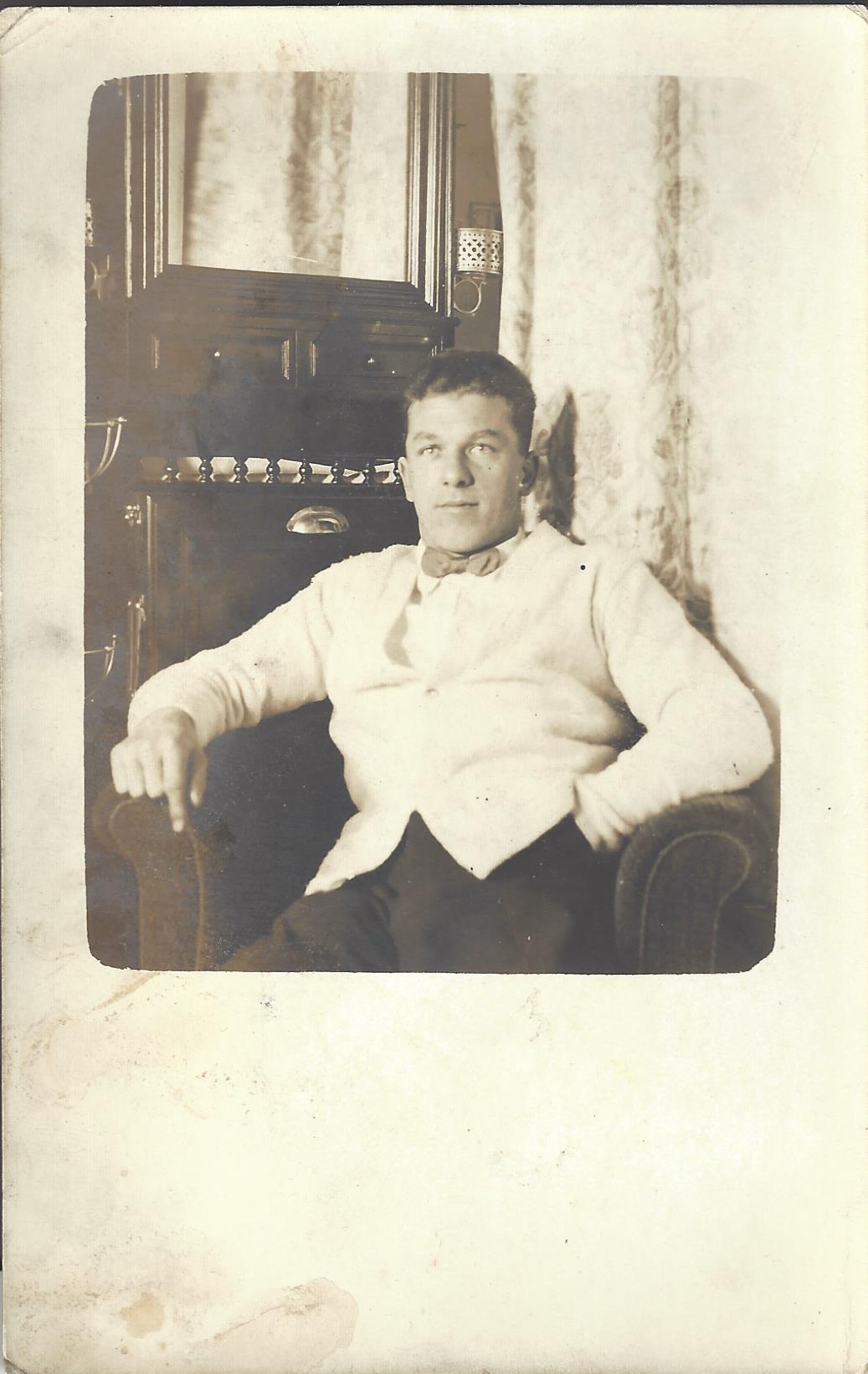Thanks to John Sayers for these insights into the long voyage from Sydney to England.
I can’t resist a group of photographic images related to my collecting passion of Ocean Liners. So, when I saw a combination of a dozen postcard and photograph images taken on board the SS Euripides of the Aberdeen Line as she sailed from Australia to England in 1921, I couldn’t resist. My wallet came out and money flowed to the happy dealer at the speed of light (well, they weren’t very expensive!)


There are six photographs and six postcards, with no attribution to any photographer. Several have penciled captions which may not have been made by the original traveler. One gets that impression when a caption has a question mark after it. Figures 1 and 2 carry the caption of “Crossing the Line?” which makes me think that it may be a dealer’s guess rather than reality. Clever costumes, but were they instead for an onboard costume party, which was a normal feature of almost any voyage?
The pirate’s hat in the background to Figure 2, and the elaborate elephant outfit in Figure 1, suggest that it was an event planned by the ship’s crew and carried out by them as the ship ‘Crossed the Line’ i.e. crossed the Equator from the Southern to the Northern Hemisphere. This ceremony, featuring King Neptune, occurred as a matter of tradition and continues to this day. These costumes could have been used many times by the ship, for many ceremonies.
One of the stops on the route to England would have been in Durban, South Africa and this is probably where the photo in Figure #3 was taken. Photos 4, 5, and 6 were all taken ‘at sea’, including the jaunty First Engineer in #6.



![S.S. Euripides. First Eng[ineer]](http://blogs.bodleian.ox.ac.uk/jjcoll/wp-content/uploads/sites/176/2020/05/Figure-6-1st-Eng-name-illegible.jpg)

Figures 7 and 8, postcards picturing the departure, are wonderful at capturing the emotions of the moment. You can almost watch the streamers float to the dock and hear the good wishes shouted by those on shore to those standing on the deck of the S.S. Euripides. This was an important event, considering the distance to be covered and the long time to be spent and the risks faced at sea.


The men pictured in postcards 9 and 10 are crew, but why would one want photos of groups of the crew? One’s Room Steward perhaps, and one’s Dining Room Steward(s), but why the entire lot of them?

Of course, Sydney to England by sea, with stops at several ports en route, would be a long voyage and a gregarious young man such as the one in Figure 12 would get to know many people. Note that there were no women in the crew. Men only at this stage of passenger shipping.

One of the bridges to get to know fellow passengers was mealtime and the grouping around the table in Figure 11 gives us a feeling for the moments when the ice was broken. Welcome Dinners, Gala Dinners, and other dining platforms all helped to pass the time. And of course, the Farewell Dinner, when table mates signed each other’s menus and vowed to keep in touch, brought down the curtain on the voyage.
Unfortunately, we do not know the name of the gentleman who made this voyage, but we do have a probable photograph of him on the postcard in Figure 12.

At the time of this note, the voyage was 96 years ago. The dashing young man, now no longer with us, who had perhaps already made his fortune in Australia, was heading to England to purchase an enormous country estate – or a Town House in London – or to claim an inheritance – or??? We do not know, and we will never know, but at least we have been able to enjoy part of his journey to England, almost one hundred years later!

